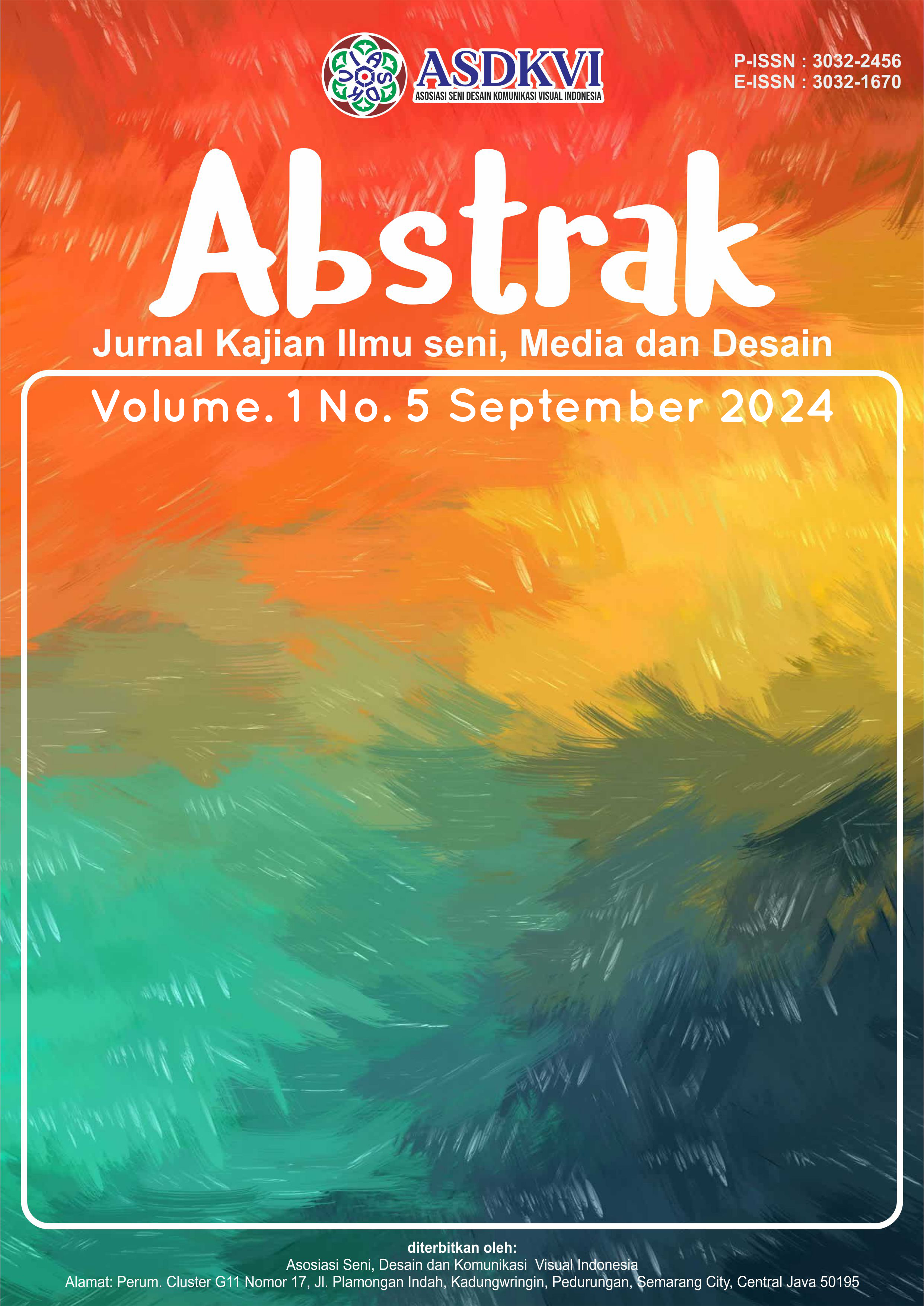Eksistensi Kesenian Kuda Lumping di Desa Bandarejo Kabupaten Pasaman Barat
DOI:
https://doi.org/10.62383/abstrak.v1i5.290Keywords:
Existence, Horse Art, LumpingAbstract
This study aims to describe the use, form of presentation and function of the Kuda Lumping art in Bandarejo Village and identify the factors that affect the existence of Kuda art and formulate efforts that can be made to maintain the existence of Kuda Lumping art in Bandarejo Village. This type of research is qualitative research with a descriptive method of analysis. The research instrument is the researcher himself and is assisted by supporting instruments such as stationery and cameras. Data were collected through literature studies, observations, interviews and documentation. The steps to analyze data are data collection, data reduction, data presentation and conclusion drawn. The results of the study show that Kuda Lumping is a Javanese traditional art that still exists in Nagari Lingkuang Aua Bandarejo, West Pasaman Regency. Until now, the art of Kuda Lumping is still performed on the commemoration of the Eid al-Fitr celebration in the area. The art of Kuda Lumping has become a necessity for the people of Nagari Lingkuang Aua Bandarejo, because from the past until now the art of Kuda Lumping is still used and performed in commemoration of big days, especially during the celebration of Eid al-Fitr and the art of Kuda Lumping is still recognized in the midst of the community, so that the existence of the art of Kuda Lumping is still maintained by the community that supports it.
References
Jazuli M. (2008). Pendidikan Seni Budaya Suplemen Pembelajaran Seni Tari. Semarang: Unnes Press.
Koderi, M. (1991). Banyumas Wisata Dan Budaya. Purwokerto : CV. Metro Jaya.
Koentjaraningrat. (1987). Sejarah Teori Antropologi I. Jakarta: UI- Press.
Larasaty, W., Marzam, M., & Syeilendra, S. (2013). Persepsi Masyarakat Terhadap Pertunjukan Organ Tunggal Malam Hari Dalam Acara Pernikahan Di Tebo. Jurnal Sendratasik, 2(1), 81-90.
Maulana, Achmad. (2011). Kamus Ilmiah Populer Lengkap. Yogyakarta : Absolut.
Maulana, R., Opdenakker, M. C., & Bosker, R. (2014). Teacher–student interpersonal relationships do change and affect academic motivation: A multilevel growth curve modelling. British journal of educational psychology, 84(3), 459-482.
Nazir. (1988). Metodologi Penelitian. Jakarta: Ghalia Indonesia.
Rantiksa, B. (2017). Upaya Masyarakat dalam Melestarikan Kesenian Kuda Lumping di Dusun Tegaltemu, Kelurahan Manding, Kabupaten Temanggung. E-Societas: Jurnal Pendidikan Sosiologi, 6(3).
Sedyawati, Edi. (1984). Tari Tinjauan dari berbagai Segi. Jakarta: PT. Dunia. Pustaka Jaya.
Sedyawati, Edi. (1986). Pengetahuan Elementer Tari dan Beberapa Masalah Tari. Jakarta: Direktorat Kesenian, Proyek Pengembangan Kesenian Jakarta. DepartemenPendidikan Dan Kebudayaan
Sumardjo, Jakob. (2000). Filsafat Seni. Bandung : ITB.
Suwaji. (1988). Apresiasi Seni Tradisional. Semarang : IKIP Semarang.
Downloads
Published
How to Cite
Issue
Section
License
Copyright (c) 2024 Abstrak : Jurnal Kajian Ilmu seni, Media dan Desain

This work is licensed under a Creative Commons Attribution-ShareAlike 4.0 International License.





